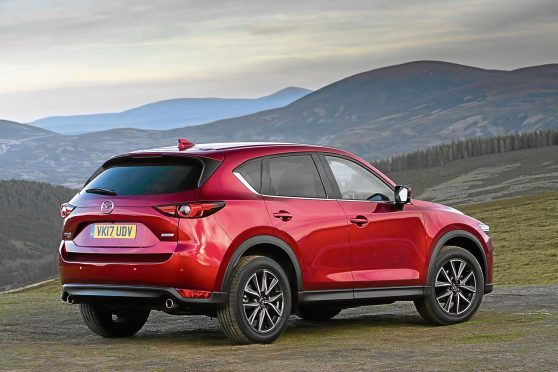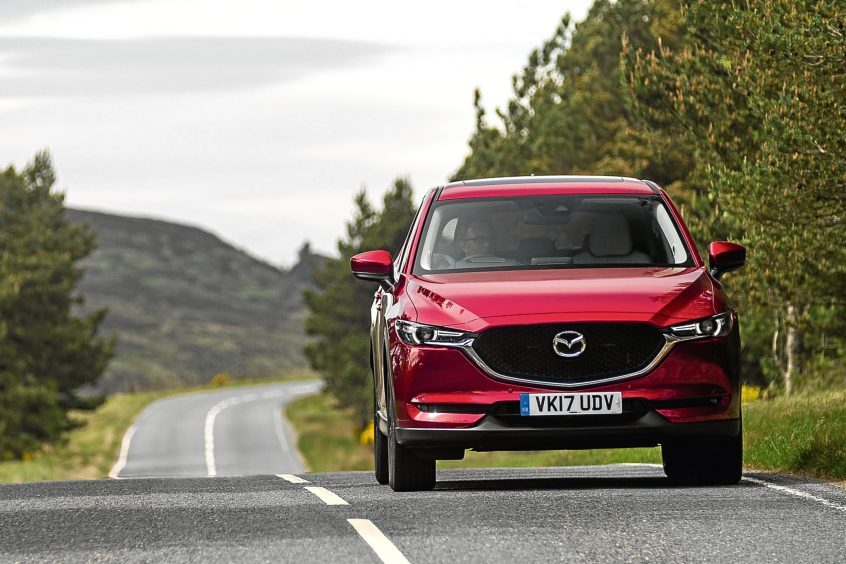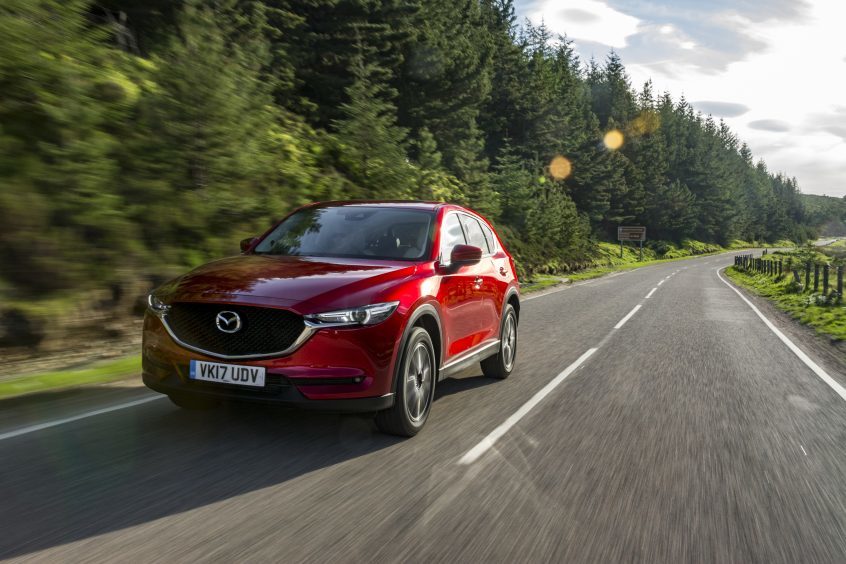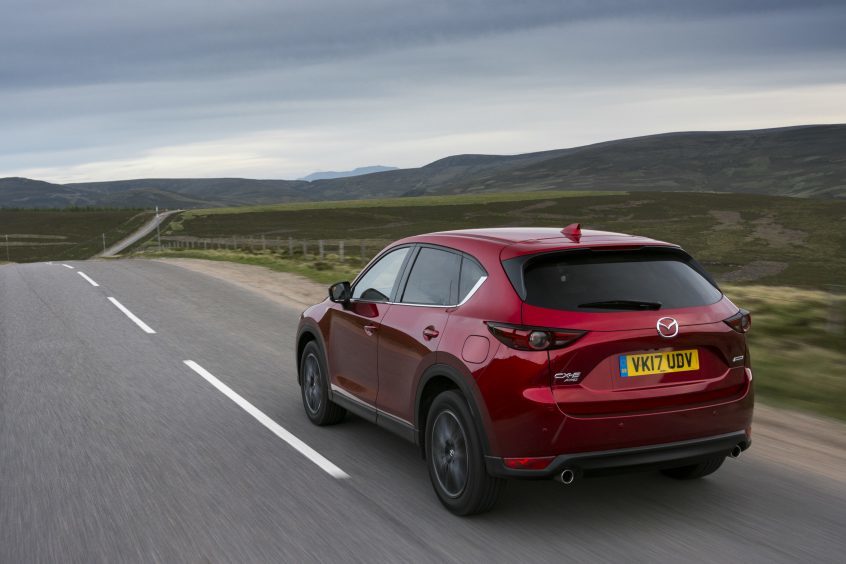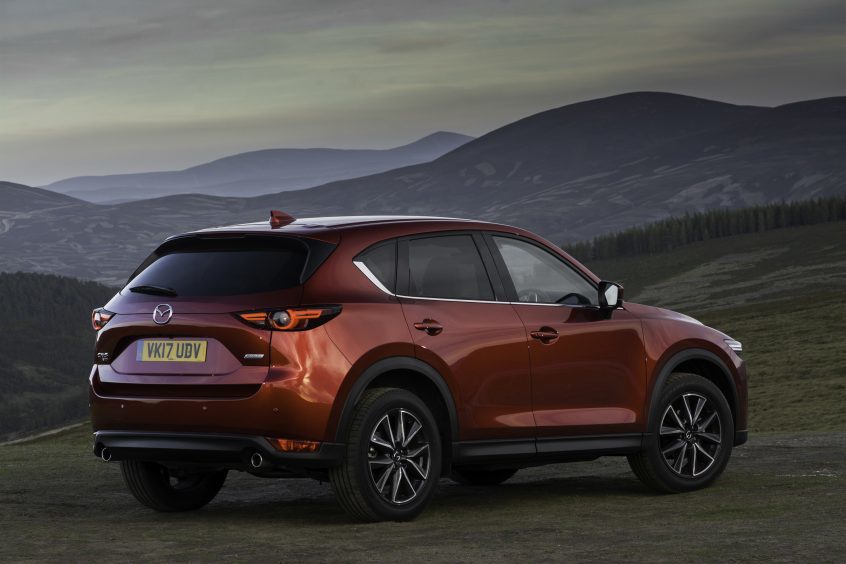Mazda’s first attempt to beat Nissan’s Qashqai, the CX-5, was very well received when it was launched in 2012.
Spacious and dynamic to drive, it was snapped up by those who needed an SUV that was a bit larger than most.
Fast forward five years the Mazda has released a new second generation model.
The slightly cutesy front end has been replaced by something a lot sleeker and the whole package looks that little bit sharper than before.
The new model sits inside a bodyshell that’s 15% stiffer, which improves the already agile handling.
Mazda has also worked hard to improve the car’s refinement, adding in extra noise insulation for a quieter ride.
The new CX-5 was given its UK launch in Aberdeenshire earlier this year, with Mazda wanting to showcase the model on Scottish roads. I drove it back then, and Mazda have since sent me a CX-5 to spend a week living with.
There’s a 2.2 litre diesel with either 148bhp or 173bhp, and a petrol with 163bhp. Having driven all three I’d avoid the petrol – its lack of torque means you have to work the engine hard to get the best performance out of it. Either of the diesels provides a good blend of power and economy.
You can have your CX-5 with front or four wheel drive. Given that very few SUV drivers buy them because of a burning need to get off road, the two-wheel drive model’s probably the one to go for.
I spent a week with the lower powered diesel with front-wheel drive in high spec Sport Nav trim.
The CX-5 is slightly more expensive than the Nissan Qashqai (my test car was a little under £29,000) but it’s better equipped and it’s a bigger car. Even base models get adaptive LED headlights, privacy glass, auto lights and wipers, front and rear parking sensors, and a 7in touchscreen. My top spec model adds larger alloy wheels, a power tailgate, electric heated leather seats, keyless entry and a Bose stereo.
The improved refinement becomes obvious as soon as you get above 40mph. The CX-5 was always fun to drive but now it’s a refined cruiser as well.
The cabin has also been well updated and now looks much more upmarket. The touchscreen is clear and user friendly, but I was glad to see Mazda has kept the excellent rotary control dial, which is easier and safer to use on the move.
The new CX-5 improves on the old in all the important ways. It’s one of the very best SUVs in its sector.
Price:
£28,695
0-62mph:
9.4 seconds
Top speed:
127mph
Economy:
56.5mpg
CO2 emissions:
132g/km
